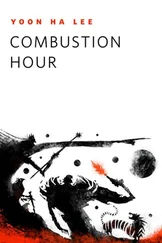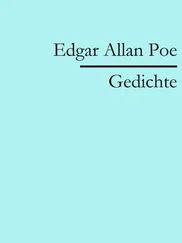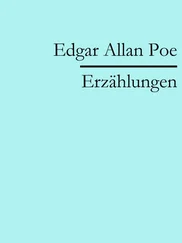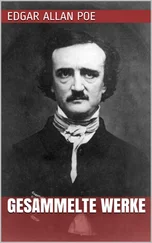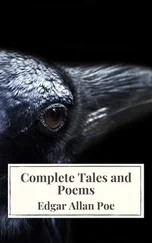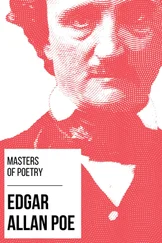Allan T. Kirkpatrick - Internal Combustion Engines
Здесь есть возможность читать онлайн «Allan T. Kirkpatrick - Internal Combustion Engines» — ознакомительный отрывок электронной книги совершенно бесплатно, а после прочтения отрывка купить полную версию. В некоторых случаях можно слушать аудио, скачать через торрент в формате fb2 и присутствует краткое содержание. Жанр: unrecognised, на английском языке. Описание произведения, (предисловие) а так же отзывы посетителей доступны на портале библиотеки ЛибКат.
- Название:Internal Combustion Engines
- Автор:
- Жанр:
- Год:неизвестен
- ISBN:нет данных
- Рейтинг книги:5 / 5. Голосов: 1
-
Избранное:Добавить в избранное
- Отзывы:
-
Ваша оценка:
Internal Combustion Engines: краткое содержание, описание и аннотация
Предлагаем к чтению аннотацию, описание, краткое содержание или предисловие (зависит от того, что написал сам автор книги «Internal Combustion Engines»). Если вы не нашли необходимую информацию о книге — напишите в комментариях, мы постараемся отыскать её.
New engine technologies and concepts Effects of engine speed on performance and emissions Fluid mechanics of intake and exhaust flow in engines Turbocharger and supercharger performance analysis Chemical kinetic modeling, reaction mechanisms, and emissions Advanced combustion processes including low temperature combustion Piston, ring and journal bearing friction analysis The
expands on the combined analytical and numerical approaches used successfully in previous editions. Students and engineers are provided with several new tools for applying the fundamental principles of thermodynamics, fluid mechanics, and heat transfer to internal combustion engines.
Each chapter includes MATLAB programs and examples showing how to perform detailed engineering computations. The chapters also have an increased number of homework problems with which the reader can gauge their progress and retention. All the software is ‘open source’ so that readers can see in detail how computational analysis and the design of engines is performed. A companion website is also provided, offering access to the MATLAB computer programs.

 atdc. As discussed in more detail in the next example, optimal work from an engine usually occurs with a peak burn rate a few degrees after top dead center, so a significant fraction of the combustion will occur during the expansion process.
atdc. As discussed in more detail in the next example, optimal work from an engine usually occurs with a peak burn rate a few degrees after top dead center, so a significant fraction of the combustion will occur during the expansion process.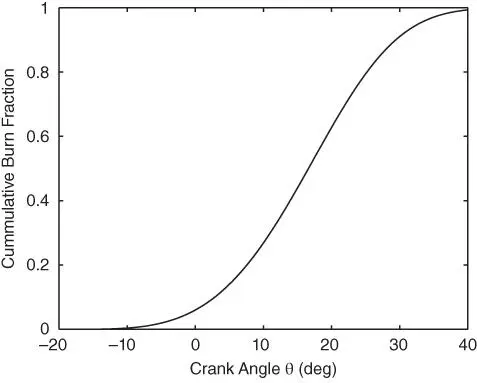 Rate of energy release curve for Example 2.4.
Rate of energy release curve for Example 2.4. 

 and
and  refer to the premixed and mixing controlled combustion portions, respectively. The parameter
refer to the premixed and mixing controlled combustion portions, respectively. The parameter  is a nondimensional constant,
is a nondimensional constant,  and
and  are the burning durations for each phase,
are the burning durations for each phase,  and
and  are the integrated energy release for each phase, and
are the integrated energy release for each phase, and  and
and  are the nondimensional shape factors for each phase. The
are the nondimensional shape factors for each phase. The  and
and  parameters are determined empirically from engine performance data. The dual Wiebe function is described in more detail and applied to a fuel–air compression ignition cycle in Chapter 4.
parameters are determined empirically from engine performance data. The dual Wiebe function is described in more detail and applied to a fuel–air compression ignition cycle in Chapter 4.
 and has a combustion duration
and has a combustion duration  during the compression and expansion strokes, and solve for the resulting cylinder pressure
during the compression and expansion strokes, and solve for the resulting cylinder pressure  as a function of crank angle. The simple model assumes the inlet and exhaust valves are closed at the start of integration at
as a function of crank angle. The simple model assumes the inlet and exhaust valves are closed at the start of integration at 
 , so it does not account for flow into and out of the combustion chamber.
, so it does not account for flow into and out of the combustion chamber. , is
, is
 , and
, and 




